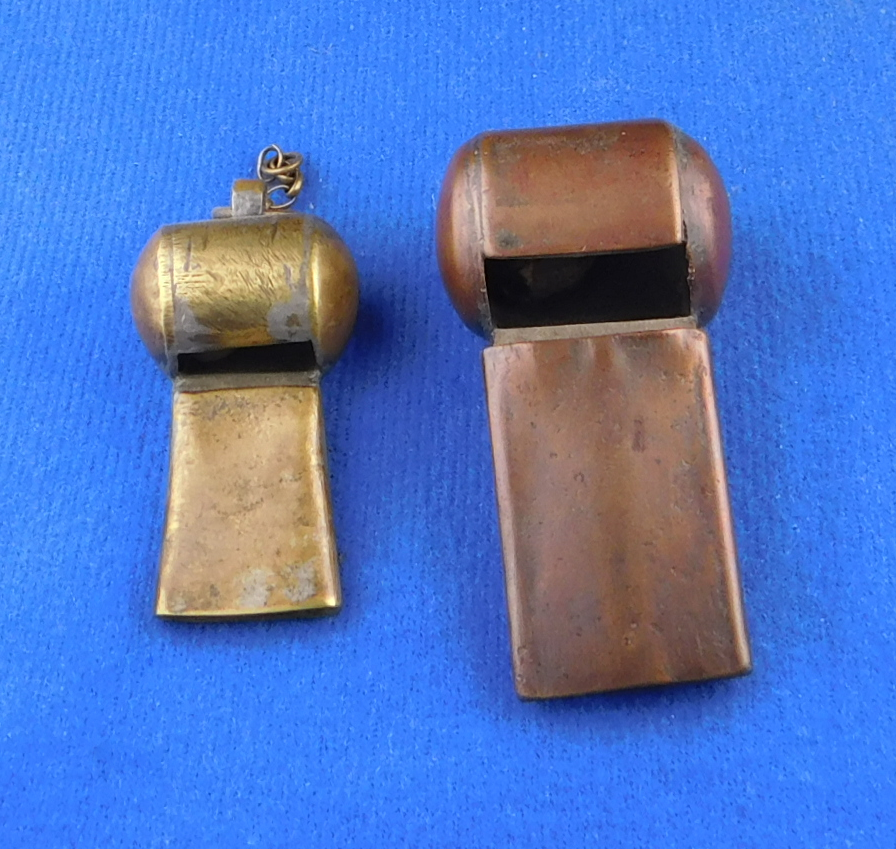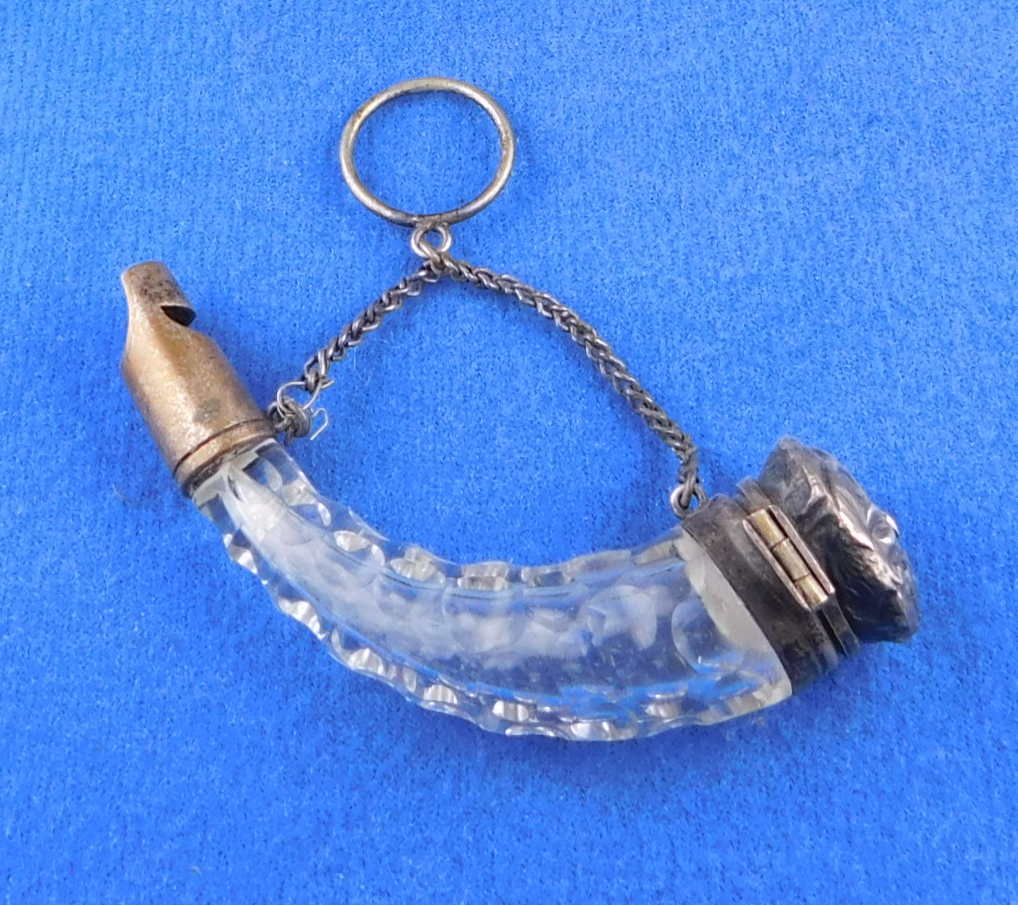Spotlight > Whistle Categories > Escargot > 090
WHISTORY:
Ralph Slazenger (1844 – 1910) was born in Warrington to a family of Jewish German origin. He attended Manchester Grammar School and Forster’s College in Cheatham before joining the family firm of tailors in Manchester.
The Slazenger & Sons name was introduced in 1876. Athletic clothing was produced from 1877.
Ralph and his brother Albert Slazenger (1857 – 1940) transferred the family firm from Manchester to 56 Cannon Street, London in 1879. The firm began to produce sporting equipment from around this time.
Following the move to London, Ralph Slazenger renounced his Judaism.
Slazenger tennis balls were used at the largest tournaments in England and Scotland by 1888.
British businesses controlled practically all of the European tennis equipment market by 1889.
Ralph Slazenger retired in 1901, leaving sole control of the firm with his brother.
Slazenger was officially founded in 1881 by the Slazenger brothers, Ralph and Albert.
In 1881 Ralph Slazenger left his native Manchester, and opened a shop on London's Cannon Street selling rubber sporting goods.
The tennis ball has come a long way since Slazenger provided its first hand-sewn, wool-coated balls to Wimbledon in 1902. Every ball is identical now. It is measured for its bounce, its size, its internal pressure. Its wool must be of a good quality, each fiber around three inches long. The tin in which the ball is packed must be pressurized to keep it from going soft.
Tennis balls are big business. They make up about a fifth of the £165m annual turnover of Dunlop Slazenger, which in turn makes about a fifth of the 240 million tennis balls made each year worldwide. And though it is the only name on the tin, Dunlop Slazenger is just one of dozens of companies that share a stake in the balls rolling from tins in Wimbledon today. All over the world right now, there are ships chugging across oceans towards Manila with a breathtakingly diverse range of ingredients. Clay from South Carolina, sulphur from Korea, silica from mines in Greece, magnesium carbonate from Japan and zinc oxide from Thailand are but a few of the substances used to vulcanize the rubber and give it the right amount of stretch and bounce. The tins come from Indonesia; some of the dyes are shipped from the UK.
On 15 September 1940 during a heavy air raid on London, incendiary bombs fell on the Slazenger factory. The Gradidge factory in Woolwich also suffered similar fate. The Sykes factory at Horbury was undamaged by the bombings, and although Slazenger and Gradidge were able to continue production at other centres it was perhaps a sign of the times that the four companies decided to pool their resources and form an association to work for the nation's war effort and then ultimately in peace time. Henceforth the company was known as Slazengers Sykes Gradidge and Ayres.
1959: Ralph Slazenger Jr. sells the family business to Dunlop Rubber.
With these background notes we focus on the Slazenger stamped three piece escargot. The whistle is made from two cast parts that are soldered together – left and right sides. For the mouthpiece there is a bent over top piece. The knop is included in the two sides.
WHISTLE ARCHEOLOGY:
It is a very heavy well-made nickel plated brass whistle. On the top plate beside the name is PAT. APP. For which means it had a patent applied for.
None have been found that say PATENTED only.
Who manufactured this whistle is unknown.
What year it was produced is also an unknown.
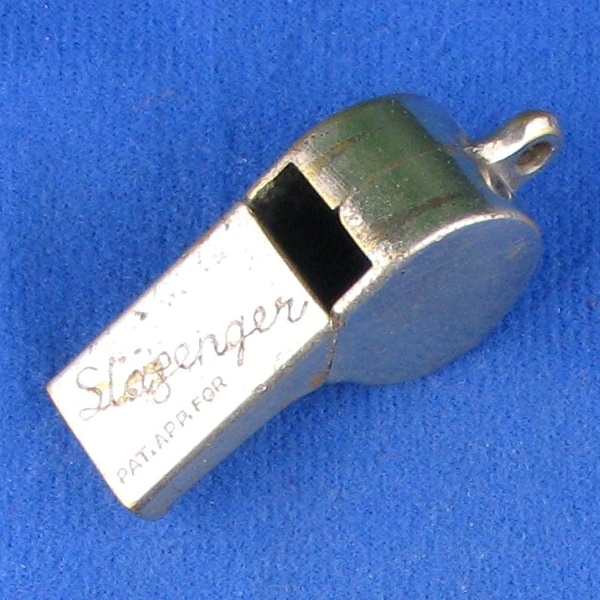
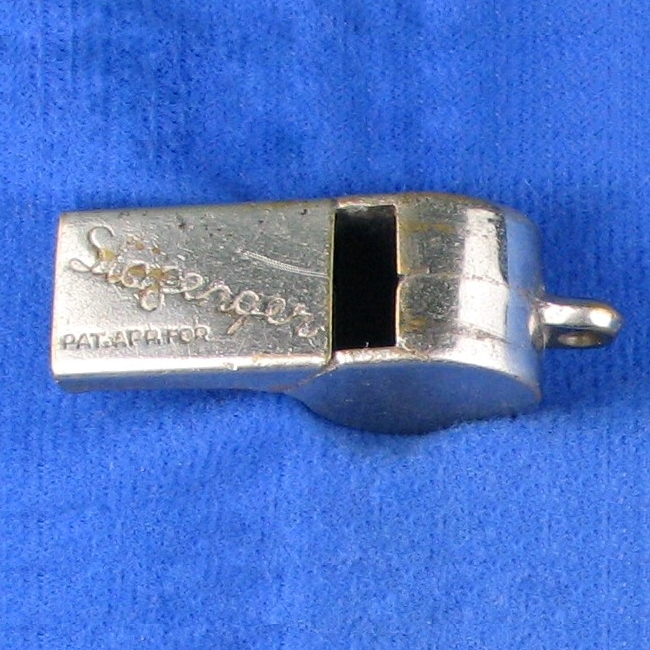
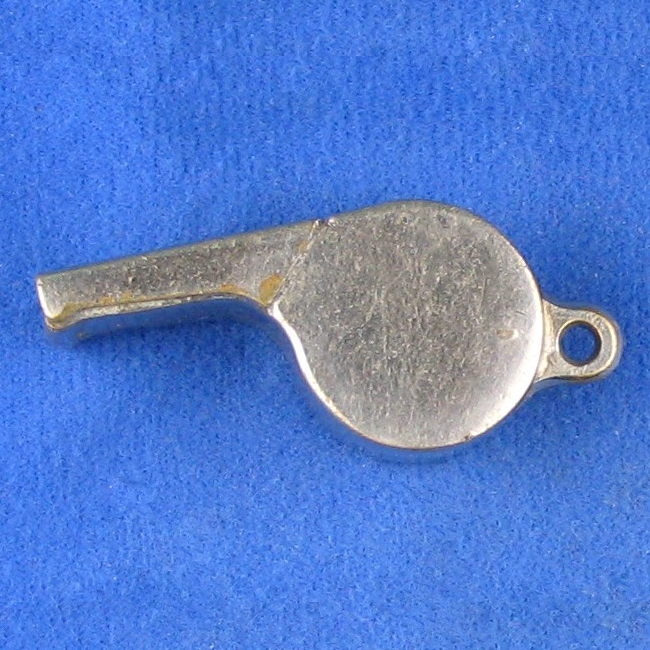
We took a couple pictures of a UK cast whistle made by Hudson for comparison. It is patent number 447673. One notes the similarities in structure and size.
The Hudson was patented in 1936. It also had two interlocking sides. Note the very similar knop connection.
The Hudson was made with antimony, the Slazenger with brass.
The Hudson has no top plate for the mouthpiece, but is two entire cast sides.
However the sizes are almost exactly alike. The knops are at the same angle. Both whistles have tooth grips under the mouthpieces.
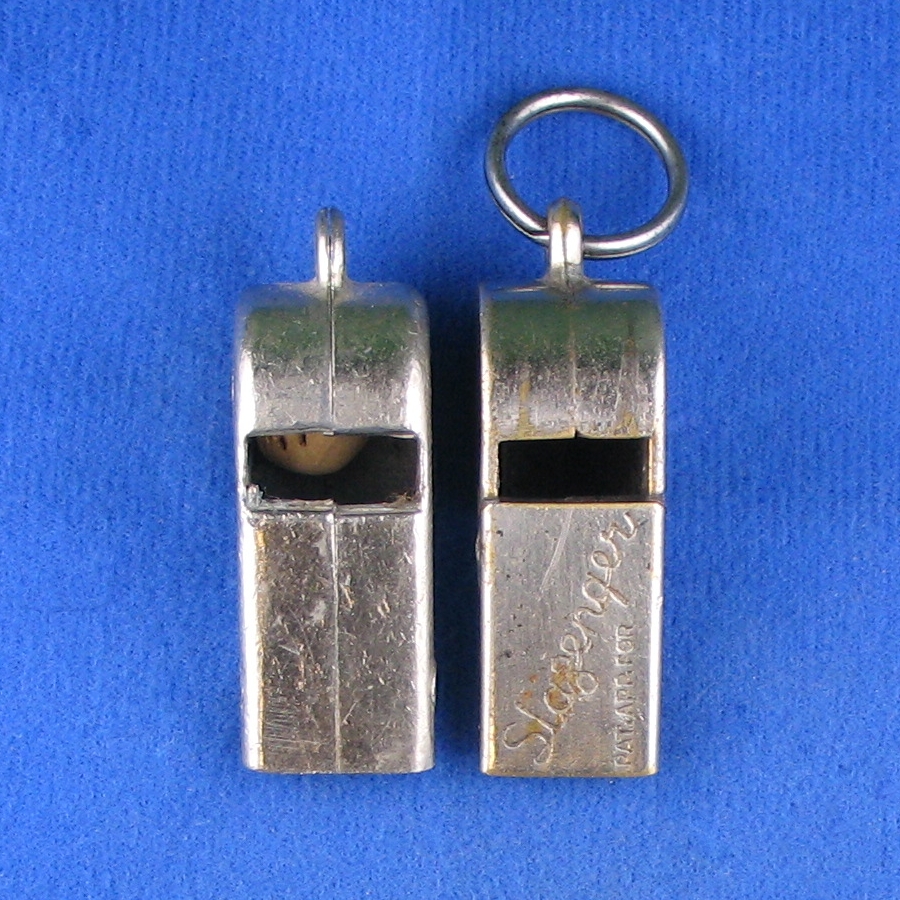
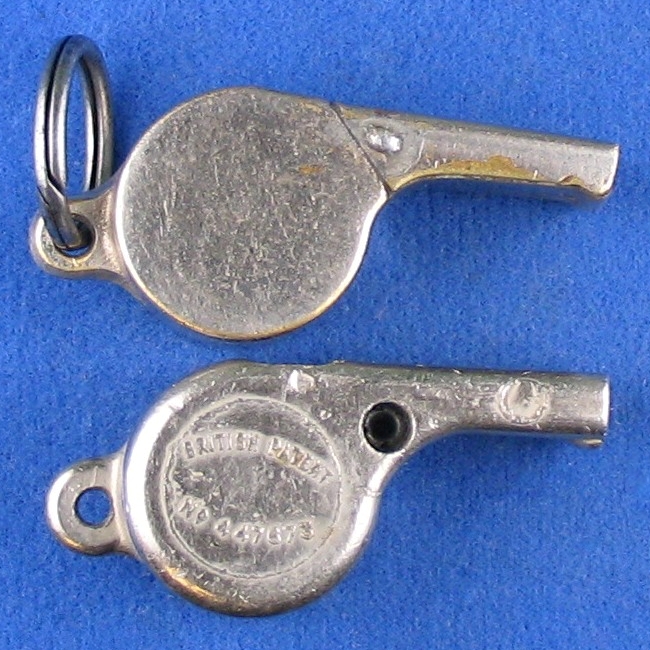
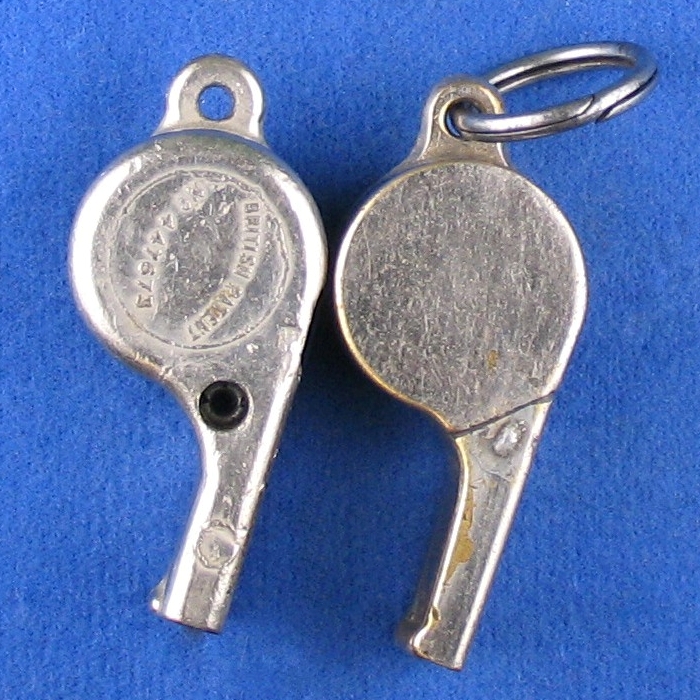
We were told by a collector that he had found a smaller model but without pictures it is unverified at this time.
We checked with Simon Topman from Hudson’s whistle history. Here are some important notes:
Turning to your whistle , we did not make it . The castings are similar but tellingly different to ours.
We seriously doubt that any patent application for this product would succeed as we already had our patent in place. But a trawl through the US patent application records may be revealing as to maker. A lot of people put “patent pending “ on products to repulse would be copiers . Often it isn’t.
We note that the name Slazenger , a very famous sports company of the 30s up to 70 s is only engraved after casting . This is odd as a firm the size and power of Slazenger would have had their famous name cast into the product as we did. NOT added after. Also Slazenger only ever made racket sports gear, tennis, squash et al. So no need for a whistle.
This is not Slazenger’s handiwork.
– TWG
Posted July 5, 2018
BIBLIOGRAPHY:
1) J. R. Lowerson, ‘Slazenger, Ralph (1845–1910)’, Oxford Dictionary of National Biography, Oxford University Press,
- Official website
3) "New balls, please". 24 June 2002 – via The Guardian.
4) Let’s Look Again-the History of Slazenger
